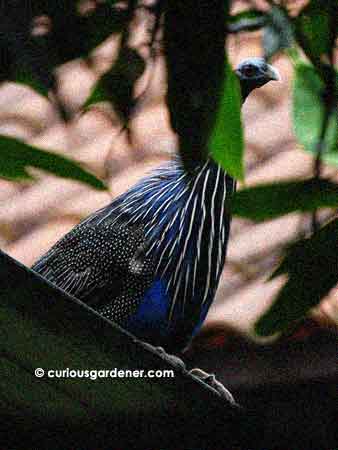
Finally! Success in growing marigolds from seed - with Sunset Hibiscus also sharing the spotlight in the top right corner.
As 2010 drew to a close, I decided that I should start planting some of the various seeds I’d accumulated over the months. It was also a good time to start replenishing my annuals that had been dying out over the rainy season. And so I started a few lots of seeds, not based on any plan, but on what I had in hand…
So far, the marigolds are the furthest along, and I’m doing my best to keep them out of the way of the snails. Thank you, Chawan, for the fresh seeds you gave a few months back! These babies sprouted and were transferred to individual starting pots, and are ready for a slightly bigger home now. I hope to plant them out without incident in a month or so, and that they’ll flourish like my yellow cosmos are doing now.
Speaking of cosmos, I was so pleased with the yellow cosmos plants that I got seeds for red and orange cosmos, too. Those have sprouted and are growing nicely for now. I can’t wait to see them in bloom!

Here's a fun comparison - both Zinnia plants pictured germinated at the same time. The bigger one is about 15cm tall now. The tiny one was attacked by snails and had only the tiniest bits of seed leaf left atop the stem. It is now struggling to grow new leaves. What survival instinct!
The zinnias had a good start, too. I even managed to get one precious sprout from the seeds I’d saved from my doomed red zinnia. Unfortunately, our adventurous snails got to the seedlings one night, and now I have only one healthy plant left – colour unknown. There is another possible survivor that I’m going to call Nearly Headless Zinnia, because all but a tiny fringe of the seed leaves were eaten, and it hasn’t died yet. Will those tiny bits of leaf be enough for it to survive? Maybe. I see new leaves pushing their way out, but it will likely be a stunted plant. I’ll have to start more seeds if I want zinnias in the garden. 
Someone gave me some Sunset Hibiscus seeds in an exchange, and two out of the three seeds I’d sown have germinated and grown into nice young plants. I have no idea what colour the flowers will be, but that’s just me keeping myself in suspense.
Seeing the gorgeous pictures on Sky’s site, I also had to try growing Rudbeckias. I have a few tiny sprouts growing now – not the same as Sky’s, though – and hope they’ll grow nice and big in time to come.

In the foreground, passionfruit plants; behind, one of the roselle seedlings.
I also got hold of some passionfruit seeds, and thought, why not? So some got planted, and a couple have sprouted, and now I’m wondering where in the garden to let them grow. If I want our garden to be permaculture-worthy, I ought to plant them next to a complementary plant that they can climb over (reference story here) …but do I want to “sacrifice” any of my plants?
And my oh so great plans for sunflowers… The seedlings I proudly displayed in an earlier post were wiped out over two evenings – not by snails, otherwise the snail bait I set out would have been effective – but by a pair of hairy caterpillars! Unacceptable. I’ve since started some dwarf sunflowers in pots, and am wondering how wise it would be to start the bigger plants while the weather is still so rainy – at least that’s what the Met Service predicts. The larger sunflowers need to be planted directly, and don’t like excessive water, so all this rain is not good news to me. I’ve already prepared a number of recycled PET bottle-protectors to ward off snails and caterpillars, but the question is when I can start the planting. Goodness knows, in a couple of months I’ll probably be complaining about the lack of rain…

My first dwarf sunflower sprout, looking nice and strong. I hope I didn't just jinx the plant by praising it! :|
And finally, I now have several roselle sprouts growing – an unplanned addition at this point, but certainly not unwelcome. Some will stay and others will go to new homes.
There will definitely be more plants to mention in coming weeks, but it will take time to build the garden up again – especially after the rainy weather has affected many plants, and because I persist in growing my plants from seeds and cuttings as much as possible. My philosophy is, if they sprout and grow here, it’s likely they’ll thrive here – and that’s alright, because I believe that all good things take time, and I’m willing to wait for the results…
© 2011 curiousgardener.com All rights reserved.
![]() It was nice to experience growing them, and I may try again sometime in the future, if I see fewer whiteflies around. So long, tomatoes…
It was nice to experience growing them, and I may try again sometime in the future, if I see fewer whiteflies around. So long, tomatoes…









